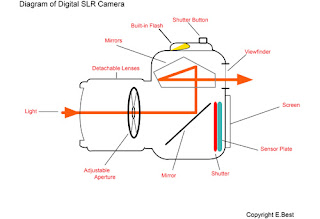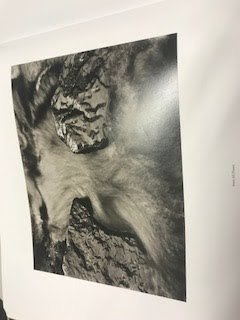Camera-less Photographer Research: Man Ray Photogram
Man Ray Research
Man Ray was born on the 27th August 1890 in south Pennsylvania, United States, under the name of Emmanuel Radnitzky. However preferred to be known as Man Ray. He later died 18th November 1976 in Paris at the age of 86 from a lung infection. Although he spent his career in France, he thought of himself as more of a painter then a photographer.
From a young age he showed his artistic abilities, where his bedroom because his studio. He was only educated through himself and had no art education but through art museums.
Man Ray was influenced by the Armory Show and galleries of European contemporary works around the 1913's. His early work was based solely around painting the subjects of cubism. He then later moved on from painting and moved towards anti-art movement with Dada using photography. They supported each other in mechanical and photographic methods of making images combining different techniques such as camera- less photography and including his older artistic ways such as, drawing.
The Process
Man Ray used the camera-less process in which he made photogram images which he called "rayograms". He placed circular objects like thumbtacks and wire coils onto paper in which he then exposed to light and processed the paper through darkroom chemicals. The objects blocked out the light in certain areas and it controlled where light was let through giving the image different tones and shades. He exposed the photographic paper to the light at a minimum of three time using a different set of objects each time. John Szarkowski though Man Rays work was a "visual invention, without a real-life model to which we can compare it"
This image is called "The Kiss", it was made in 1922 in the Moma District. The image is a black and white, monochrome arrangement of different kinds of objects. The larger objects tend to be in the fbackground, with smaller objects offset in the foreground. He uses objects such as people body parts like faces and hands within some of his other work he also used objects such as, scissors, buttons and leaves, which makes it very interesting as there are other objects which let the light through them more easily then others. It i has been made through the camera-less technique of photograms or "rayographs" how Man Ray preferred them using photographic paper.
The image gives a scary or ghosty effect as some of the objects have a faded feel, this could be because the objects are not flat to the paper so they let more light through. Although I think this effect was intended by Man Ray to make it more interesting. The composition of this image is more arranged compared to some of his other images which presents a random feel, as if he has thrown the object onto the paper and not arranged. However this image makes me feel it was more prepared for.
To create this image he prepared the hand silhouette onto photographic paper. Then he repeated this with a couples heads kissing.
I think the main purpose of this image is to show that there is more to art then a pencil and paper. I also think it shows other people that you don't need a camera to produce a photo, it shows there are lots of different methods in which other don't know of. The image above has a close relationship to love and affection. The hands could be a symbol of control and power
https://en.wikipedia.org/wiki/Man_Ray
http://www.metmuseum.org/art/collection/search/265487
https://en.wikipedia.org/wiki/Photogram
https://www.moma.org/collection/works/46405




Comments
Post a Comment